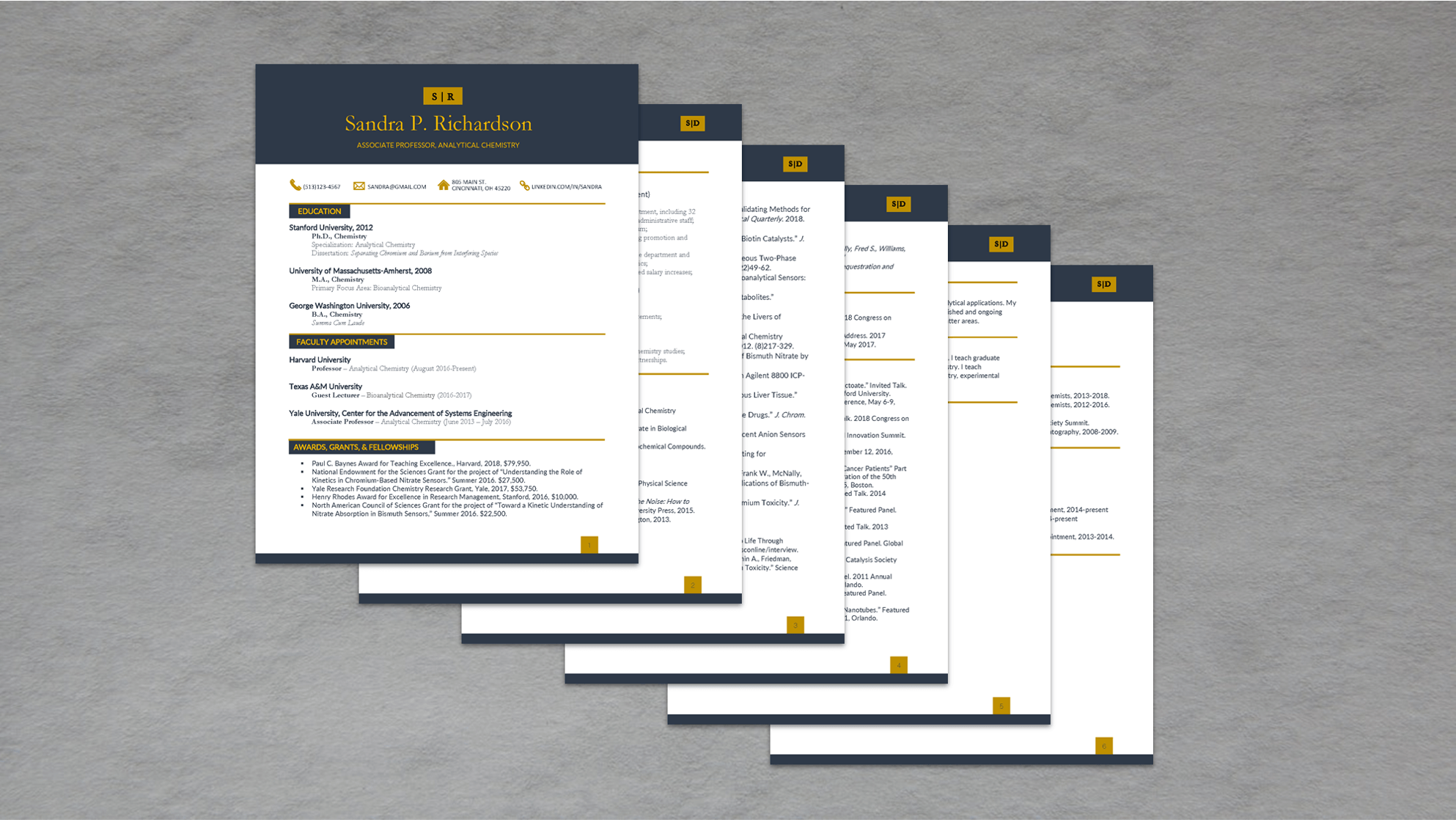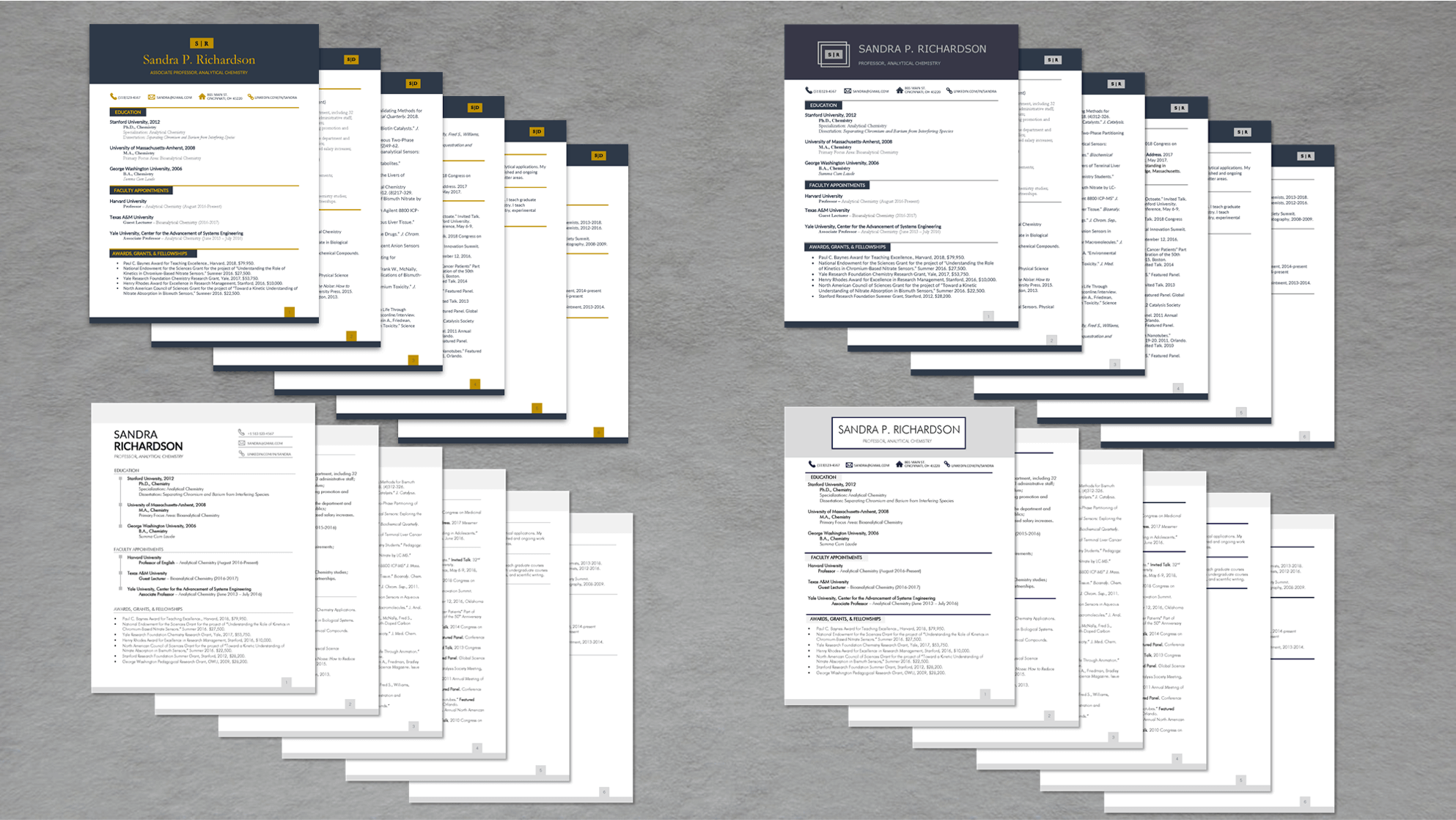Blog >> How To Write a CV (Plus Word CV Templates!)
How To Write a CV (Plus Word CV Templates!)
A CV is a professional document used to showcase a job seeker’s accomplishments and career expertise. Like a resume, a CV allows you to demonstrate to a prospective employer that you have the qualifications needed for a particular job or position so when jobs hiring takes place, you will be high up on their list as a prospective employer. The CV, or curriculum vitae (which means “course of life” in Latin), requires much more detail than a resume, however. As the Latin translation suggests, it has to be comprehensive enough to summarize an entire career trajectory.
Let’s take a closer look at CVs: how they differ from resumes, who needs them, and how to write one. Or, if you’re ready to write and need a solid foundation, check out our CV templates.
What’s the Difference Between a CV and a Resume?
While CVs and resumes are both job documents, they do different things. Most career experts will tell you that a resume should offer a quick snapshot of how your qualifications fit a particular job call. Content should be brief (approx. 1 page), skimmable, and results-oriented (focused on your quantifiable successes). A CV, on the other hand, offers a summary of your entire professional career. It should communicate to readers the depth of your unique expertise. CVs aren’t tailored to specific positions to the extent that resumes are, and they can be several pages long and include brief narrative components. In addition to highlighting what you’ve accomplished, your CV should showcase how you think and what you know.
Think of it this way: CVs and resumes both communicate your professional identity, but resumes offer a compelling glimpse while CVs invite a closer look.
Who Needs a CV?
If you plan to apply for an academic or research-related position, you need a CV. In the United States, the vast majority of CV writers are academics, who need to showcase the extent of their knowledge in a particular field or specialty area. The curriculum vitae allows job seekers to discuss topics not usually covered in resumes, like research interests, publications, speaking engagements, and teaching approaches, among other things.
Full-time academics aren’t the only ones who need to showcase research, however. A CV may be required of most any type of research-intensive position. For example, a medical specialist applying to join a research team may be asked to submit a CV instead of a resume. Regardless, the logic is the same: if you need to prove your expertise within a research-driven context, it’s a good idea to have a CV on hand, ready to share with a prospective employer.
How Do I Write a CV?
The best advice for any CV writer is this–don’t put it off. The job seeker who procrastinates writing their resume has a cake situation compared to the job seeker who procrastinates writing their CV. Again, CVs require depth and details that are hard to remember in retrospect. Draft your CV early and make updates often.
Here are a few key insights to help you get started.
Understand Common CV Sections. Although there isn’t a single format for an effective CV, they usually include the following sections.
Contact info. This section ensures that the hiring manager (or committee) knows how to reach you for an interview.
Education. The education section showcases education credentials, in reverse chronological order.
Research. The research section is crucial in a CV. Job seekers may include a range of information, from general research interests to specific publications.
Teaching. The teaching section allows researchers to showcase their approach to sharing their knowledge in the classroom (or lab), if applicable. It can include anything from teaching interests to faculty appointments to detailed descriptions of classes taught.
Service. The service section captures the expectation that professionals in research-driven contexts engage meaningfully with communities. It can include things like professional affiliations, programs developed, projects participated in, etc.
Recognize the Strategy That Goes Into Writing a Strong CV.
As a genre, the CV allows more space to communicate career expertise. This is both a good thing and a bad thing. The good news is that with a CV you don’t have to make a lifetime’s worth of work fit onto a page. On the other hand, CV writers have to fit more content into a document that needs to be as concise and persuasive as a resume. This is no small feat.
To write a strong CV, remember that you can still tailor your content for the position you’re applying for. Sure, your qualifications and expertise will stay the same, but don’t lead with your teaching interests if the position will mostly take place in the lab. Also, although common sections differ in CVs versus resumes, you can still use headings and subheadings to create guideposts for reviewers. Finally, while you have the creative freedom to use narration and complete sentences to describe complex information (e.g your pedagogical rationale for courses you’ve designed), remember that readers respond well to bullets when the information is relatively straightforward. The rules of good writing and reader-friendly document design still apply.
Ultimately, imagine reading your CV from the perspective of the reviewer. You’ve got some leeway to offer depth. Use that space to showcase your expertise and writing savvy.
To give yourself a solid head start when it comes to writing your CV, check out our Microsoft Word CV templates!

Did you find this blog helpful? Our technical writing consultants offer even more services to support impactful professional documents that clarify complex ideas and earn stakeholder interest.





